
Capiz, officially the Province of Capiz, is a province in the Philippines located in the central section of Western Visayas region. Its capital is the city of Roxas. It is located at the northeastern portion of Panay Island, bordering Aklan to the north, Antique to the west, and Iloilo to the south. Capiz faces the Sibuyan Sea to the north.

Western Visayas is an administrative region in the Philippines, numerically designated as Region VI. It consists of six provinces and two highly urbanized cities. The regional center is Iloilo City. The region is dominated by the native speakers of four Visayan languages: Hiligaynon, Kinaray-a, Aklanon and Capiznon. The land area of the region is 20,794.18 km2 (8,028.68 sq mi), and with a population of 7,954,723 inhabitants, it is the second most populous region in the Visayas after Central Visayas.

Roxas, officially the City of Roxas, is a 3rd class component city and capital of the province of Capiz, Philippines. According to the 2020 census, it has a population of 179,292 people.

Balete, officially the Municipality of Balete, is a 4th class municipality in the province of Aklan, Philippines. According to the 2020 census, it has a population of 30,090 people.

Numancia, officially the Municipality of Numancia, is a 4th class municipality in the province of Aklan, Philippines. Because of its proximity to the Capital Town of Kalibo, majority of its baranggays are classified as urbanized making the municipality the second most densely populated municipality in the province with 1,200 inhabitants per square kilometres. According to the 2020 census, it has a population of 35,693 people.

Ma-ayon, officially the Municipality of Ma-ayon, is a 3rd class municipality in the province of Capiz, Philippines. According to the 2020 census, it has a population of 41,226 people. It has a total land area of 142.32 km2 (54.95).
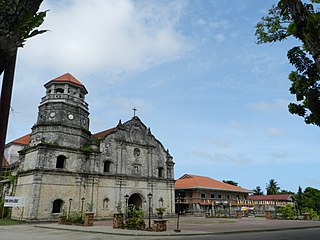
Panay, officially the Municipality of Panay, is a 3rd class municipality in the province of Capiz, Philippines. According to the 2020 census, it has a population of 48,890 people.
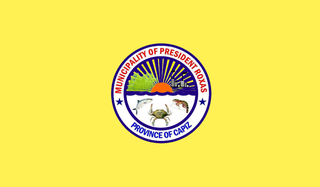
President Roxas, officially the Municipality of President Roxas, is a 4th class municipality in the province of Capiz, Philippines. According to the 2020 census, it has a population of 31,269 people.
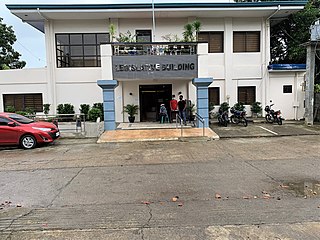
Anilao, officially the Municipality of Anilao, is a 4th class municipality in the province of Iloilo, Philippines. According to the 2020 census, it has a population of 30,520 people.

Batad, officially the Municipality of Batad, is a 5th class municipality in the province of Iloilo, Philippines. According to the 2020 census, it has a population of 22,157 people.

Calinog, officially the Municipality of Calinog, is a 1st class municipality in the province of Iloilo, Philippines. According to the 2020 census, it has a population of 62,853 people.
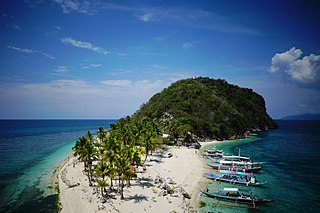
Carles, officially the Municipality of Carles, is a 2nd class municipality in the province of Iloilo, Philippines. According to the 2020 census, it has a population of 72,637 people.
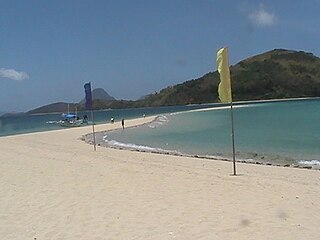
Concepcion, officially the Municipality of Concepcion, is a 3rd class municipality in the province of Iloilo, Philippines. According to the 2020 census, it has a population of 44,633 people.

Dingle, officially the Municipality of Dingle, is a 3rd class municipality in the province of Iloilo, Philippines. According to the 2020 census, it has a population of 45,965 people.

Estancia, officially the Municipality of Estancia, is a 2nd class municipality in the province of Iloilo, Philippines. According to the 2020 census, it has a population of 53,200 people.

Guimbal, officially the Municipality of Guimbal, is a 4th class municipality in the province of Iloilo, Philippines. According to the 2020 census, it has a population of 35,022 people.

Mina, officially the Municipality of Mina, is a 5th class municipality in the province of Iloilo, Philippines. According to the 2020 census, it has a population of 24,042 people.

New Lucena, officially the Municipality of New Lucena, is a 4th class municipality in the province of Iloilo, Philippines. According to the 2020 census, it has a population of 24,314 people.

Sara, officially the Municipality of Sara, is a 2nd class municipality in the province of Iloilo, Philippines. According to the 2020 census, it has a population of 54,637 people.
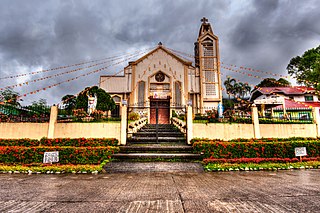
Pintuyan, officially the Municipality of Pintuyan, is a 5th class municipality in the province of Southern Leyte, Philippines and was established in 1865. During the American regime, the seat of Pintuyan was moved to Pintuyan from San Ricardo upon the election of Perfecto Vazquez as Municipal President. From then on the residents of barrio San Ricardo petitioned for a separate municipality. According to the 2020 census, it has a population of 10,202 people.
























